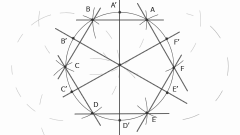How is consolidation of the fracture
Fusion (consolidation) fracture develops in 3 ways. When stable fixation of the fracture, a complete mapping of fragments, restored the circulation appears primary fusion, callus is not formed. In case of incomplete matching of the fragments, their relative mobility and circulatory disorders in this area there is a secondary fusion, accompanied by the formation of cartilaginous callus. In case of incomplete matching of bone fragments, their mobility, and poor circulation in the zone of fracture are not spliced.
Consolidation (fusion) fracture occurs by restoring the layers of the bone (endosteum, periosteum, gaversovyh channels), simultaneously absorbed traumatic hematoma formed in the area of damage. The process of bone formation is due to cell multiplication gaversovyh channels, angosta, periosteum and connective tissue. By 5-6 day defect atomtime between the bones is filled with a significant amount of blood vessels, fibroblasts, osteoblasts.
Restored the plot is kind of thickening called callus. Primary callus appears 4-5 weeks, secondary for 5-6 weeks. The next phase, the callus is reconstructed. Its restructuring sometimes lasts up to several years. The osteoblasts resolves the fragments, the ends of the fragments and excess callus.
The timing of fusion of the fractures
In fractures of ribs, phalanges and metacarpal bone consolidation occurs within three weeks in case of clavicle fracture within 4 weeks. Fractures of the metatarsal, tarsal, wrist, shoulder and forearm seam occurs within 2.5 months, lower legs - within 3 months, the bone hips is 4 months, femoral neck - for six months.
In some cases, there is delayed Union of fractures in patients of elderly and senile age, diabetes, beriberi, exhaustion, pregnancy. To local causes include: the multiplicity of fractures, circulatory problems, excessive radiation exposure, a purulent infection of soft tissues. Slow down the formation of callus improper nailing, the high activity of the patient, applying too much of the load at the traction.
Signs of slowing are: abnormal mobility after a maximum period of fusion, the appearance of pain in the area of the fracture. Violations in the process of regeneration of bone tissue can lead to the formation of a false joint. Such a diagnosis with the available x-ray signs, and if there is mobility in the area of fracture after twice the average time of fusion.






